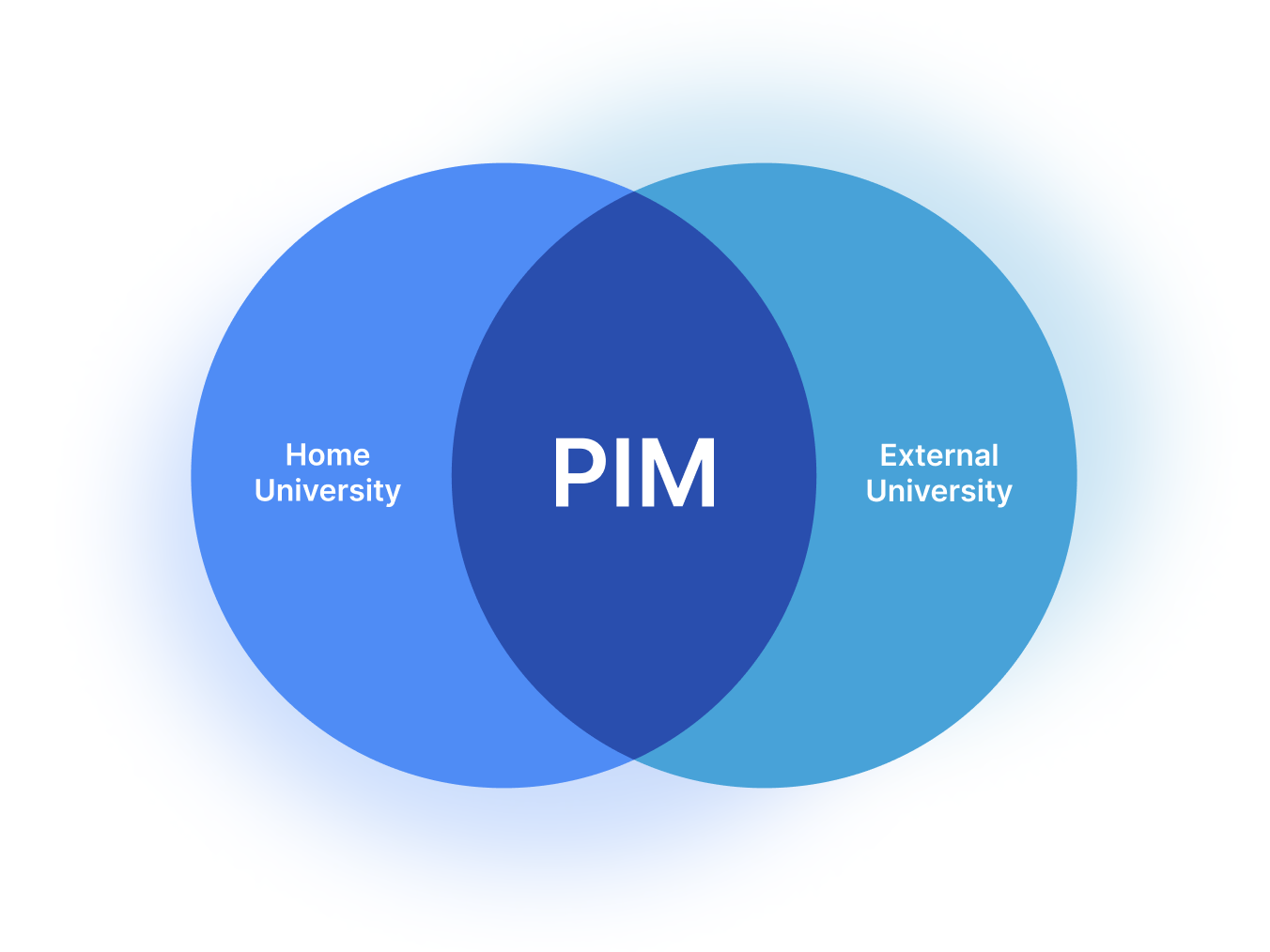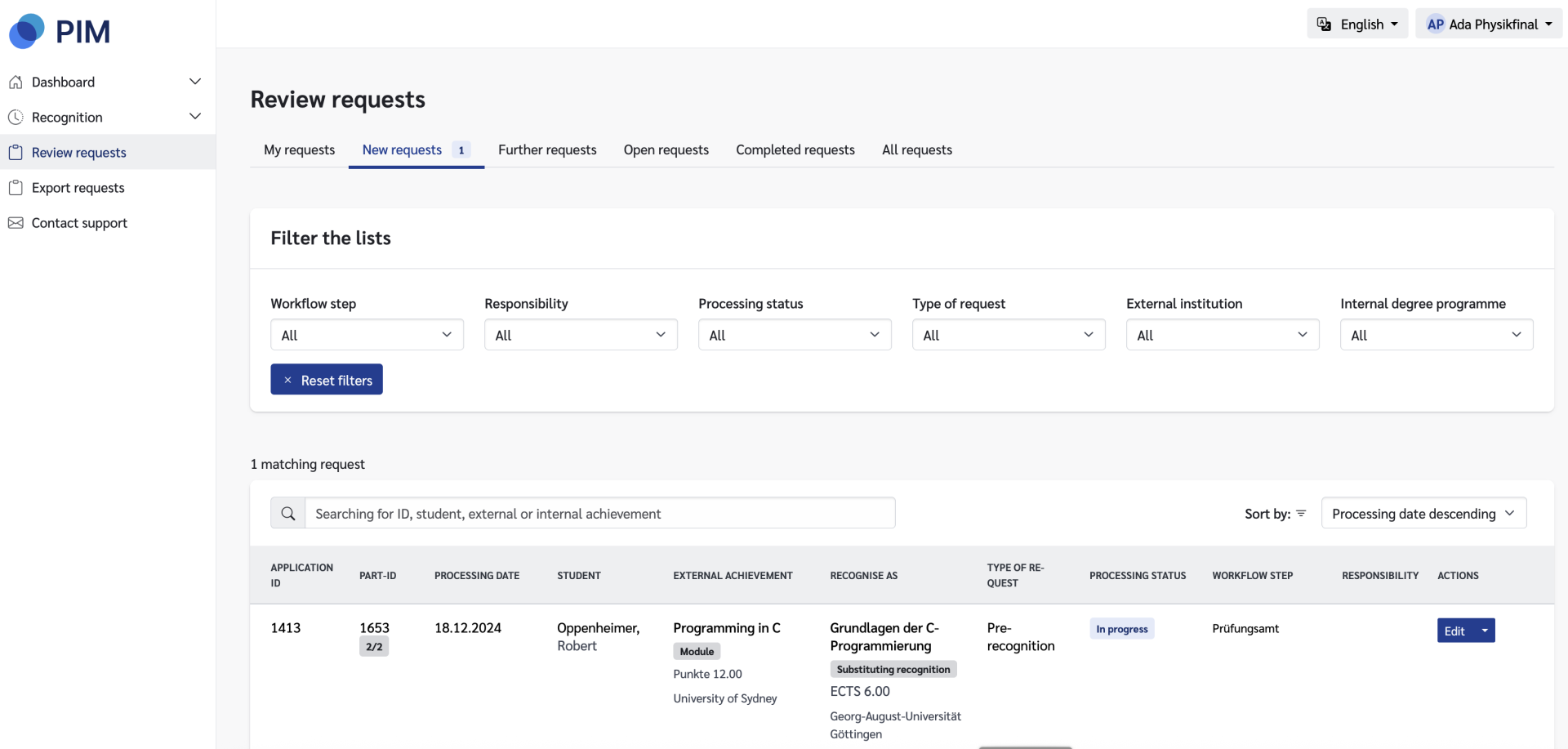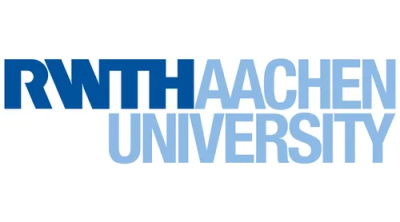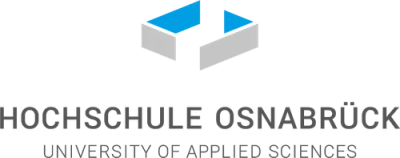Functions
Recognition of academic achievements and prior learning
Pre-recognition/learning agreement
Recognition after a stay abroad
Recognition when changing university and degree programme
Recognition of prior learning
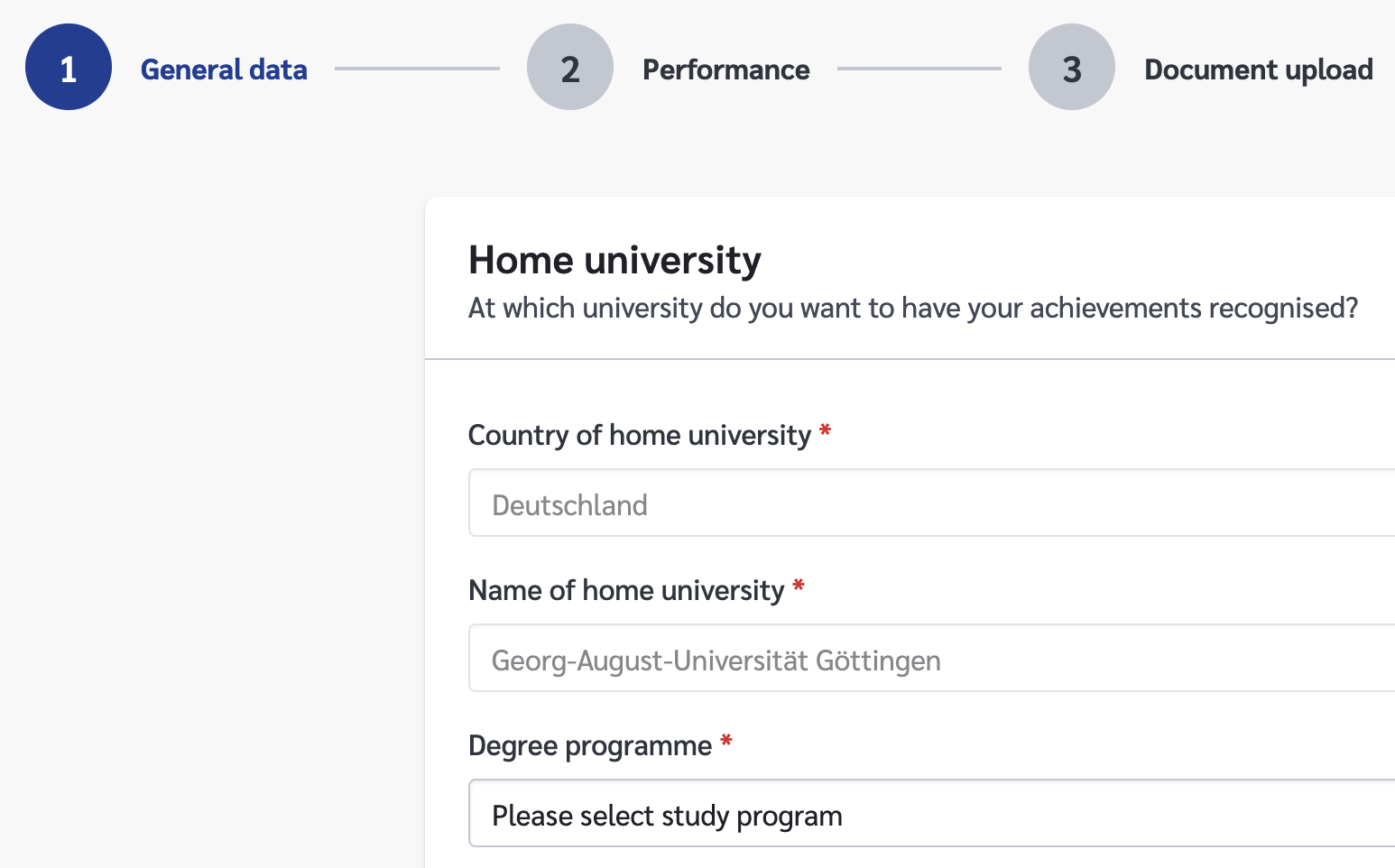
Recognition database
Decisions and reference cases
Orientation for students
Support for future decisions
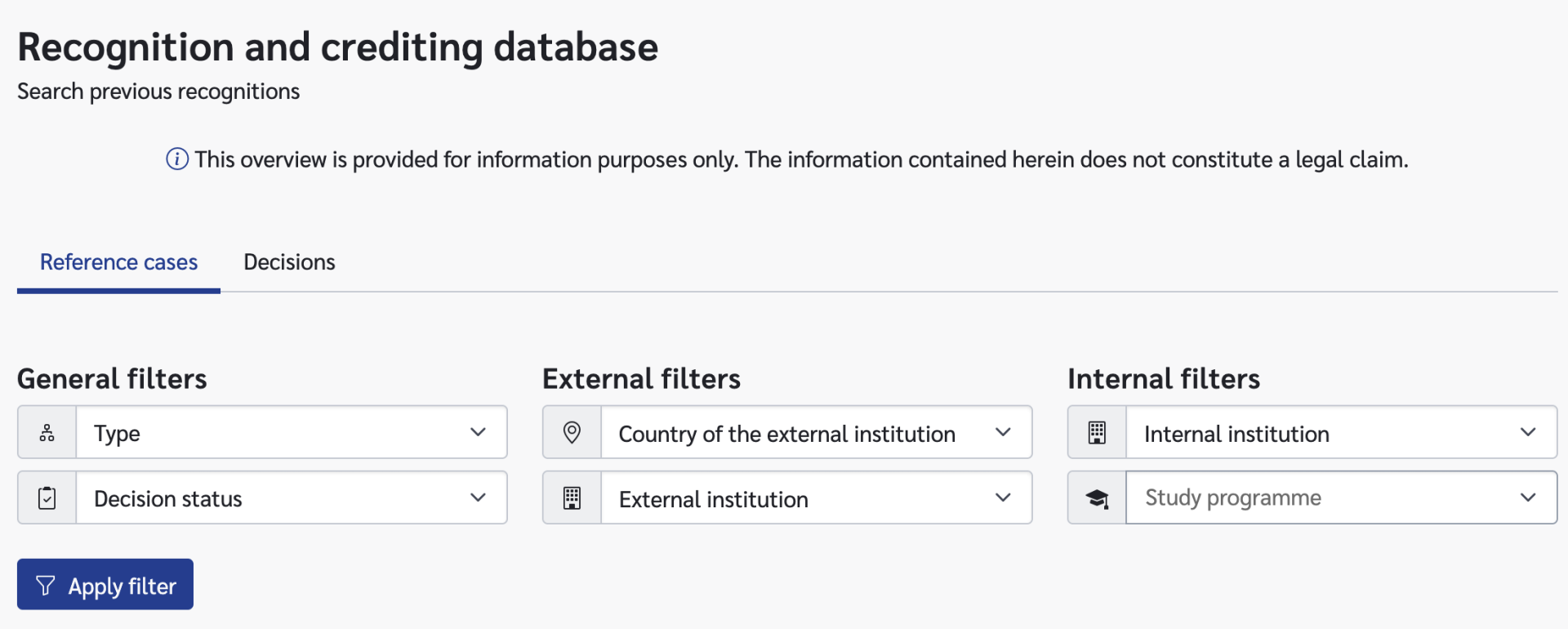
Interfaces to student information systems (SIS)
Import of structured study programme data/module handbooks from SIS
Export of the decision to the SIS
Transfer of the PDF of the decision to the d3 Document Management System via a configurable interface
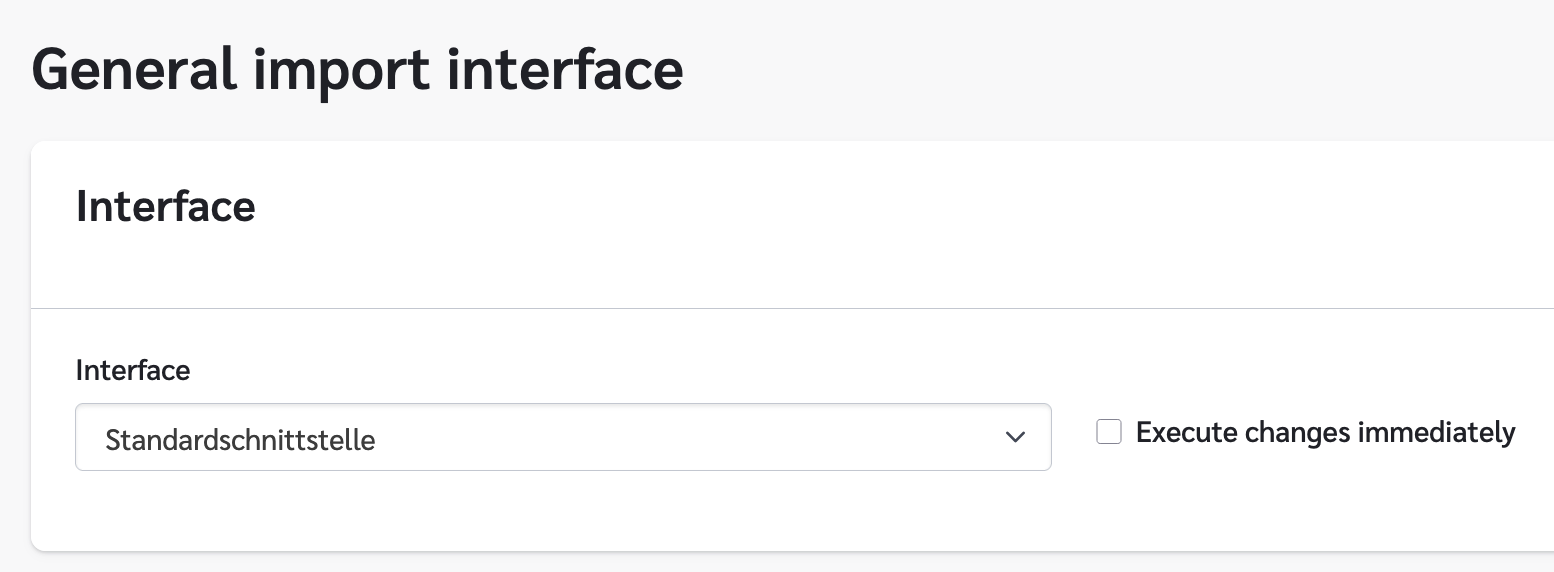
Your key to efficient administration
With PIM, you fulfil a requirement of the Online Access Act (OZG), implement a digitisation project quickly and create transparency and trust with the recognition database.
Department/Faculty
Reference cases replace your Excel lists
The recognition and credit transfer database supports you in (international) study counsellingAll information on application processing in one place
Notifications about new applications for recognition
Customisable workflow for the needs of your department/faculty
Students
Centralised access to all recognition procedures
Easy planning of a semester abroad by viewing previous recognition decisions
Location-independent application
Fast transmission of documents to the university
Administration
Complete application documents
Workflow can be customised to your administration
Notification of new applications for recognition
Reduction in processing time and effort
Export of approved recognition and credits to SIS possible
Successful step-by-step introduction of PIM
Frequently asked questions
Here you will find answers to the most frequently asked questions about the PIM platform.
Please arrange an appointment with PIM to discuss utilisation. The implementation process is outlined under Successful step-by-step introduction of PIM. You can also test PIM by requesting access data from us.
Please ask your university whether it is already participating in PIM. If this is the case, you can log in to PIM and view the participating degree programmes.
PIM offers standard interfaces to HISinOne, CampusOnline, CampusNet (Datenlotsen) and FlexNow. If a direct connection is not desired, we support universities in migrating their data. Subsequent integration of the interfaces is possible at any time.
PIM can also be used in these cases and facilitate the process of recognition. The prerequisite is that the degree programme data is available in digital form. An import from tables is also possible here.
Es freut mich sehr, dass Sie sich [mit PIM] um die Digitalisierung an unserer Hochschule kümmern und dies aktiv vorantreiben.
About us
The browser-based software is the result of a project funded by the Federal Ministry of Education and Research (BMBF) and combines the experience and requirements of eight renowned universities.
